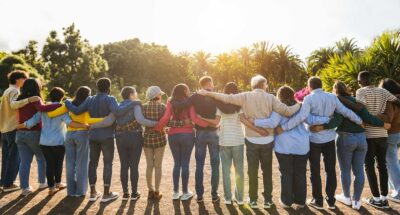Module Introduction
The science of trust and belonging tells us there are things we can do to build a school environment where everyone—students and staff alike—feels like they belong, and where they can bring their authentic selves and thrive.
As all educators know, schools are a slice of humanity and there’s absolutely no guarantee that we are going to understand or even get along with all of our colleagues and students. But we can overcome these challenges.
In this set of modules, we look at:
- Why belonging in schools matters
- Our beliefs about social and emotional well-being and belonging and how they impact students
- The questions of belonging that students carry within themselves, and how schools can respond to those questions
- Seeing our students and colleagues as human beings first by helping to meet basic psychological needs of autonomy, competence, and relatedness
- Positive teacher-student and peer relationships, and how to cultivate them
- Creating a safe learning environment using the science of psychological safety and trust
Module Resources
This toolkit includes additional resources, including classroom lessons and practices, staff meeting activities, videos, podcasts, articles, and professional development opportunities, as well as supporting materials for group facilitation on the topic of "Safety and Belonging in Schools".
Individual Exploration
Let’s first understand the science of belonging as well as reflect on our experience with belonging in school settings.
The Science of Belonging
Creating a Safe Learning Environment: The Science of Belonging
(narrated by Vicki Zakrzewski, Ph.D., Education Director, Greater Good Science Center)
Reflection
Reflect on the following questions:
- When was a time you felt you belonged, and when was a time you didn’t?
- What are the researchers’ definitions of belonging and the implications for schools?
- What research is shared on the importance of belonging in schools and how it impacts students?
Consider:
- How are you intentionally cultivating belonging among students, staff, and the broader community?
- What is one thing you would like to do to improve stakeholders’ sense of belonging?
- What policies and structures does your school have in place that might limit student belonging?
Expand the conversation to include students. Ask the students:
- What does “belonging” feel like or look like?
- What do others do or say that makes you feel like you belong?
- What can you do for others to help them feel like they belong?
2.1 Take It Deeper: Exploring Beliefs about Belonging
Let’s further define “belonging” and what that can mean in our schools. Here is a downloadable guide to help you.
Module Resources
This toolkit includes additional resources, including classroom lessons and practices, staff meeting activities, videos, podcasts, articles, and professional development opportunities, as well as supporting materials for group facilitation on the topic of "Safety and Belonging in Schools".
A reflection activity to help you define “belonging” and what that can mean in your school.
Group Facilitation
Before facilitating groups, spend time in individual exploration in order to experience and embody the learning. And if you haven’t yet explored our introduction to SEL in California, make sure you explore those resources, too.
When facilitating groups, use the following resources:
This toolkit includes additional resources, including classroom lessons and practices, staff meeting activities, videos, podcasts, articles, and professional development opportunities, as well as supporting materials for group facilitation on the topic of "Safety and Belonging in Schools".
A revisable, turnkey powerpoint slide deck to use for professional learning sessions on the topic of "Safety and Belonging in Schools".
A powerpoint slide deck with welcoming and closing activities to include in professional learning sessions.
A reflection activity to help you define “belonging” and what that can mean in your school.
Additional Modules
Safety and Belonging in Schools
- Module 2.1 Why Belonging Matters
- Module 2.2 Knowing Ourselves First: Surfacing Our Beliefs About Social and Emotional Well-Being and Belonging in Schools
- Module 2.3 The Questions of Belonging: Interventions to Help Students Feel Like They Belong
- Module 2.4 Meeting Students’ Psychological Needs to Help Them Feel Like They Belong
- Module 2.5 Cultivating Belonging Through Teacher-Student and Peer Relationships
- Module 2.6 Building a Belonging School Through Trust and Psychological Safety

Are you ready to build a kinder, happier school where everyone belongs? Join Greater Good Educators! Explore the science of well-being in a supportive community of educators from around the world. Registration is now open for the 2025-2026 school year!



Comments